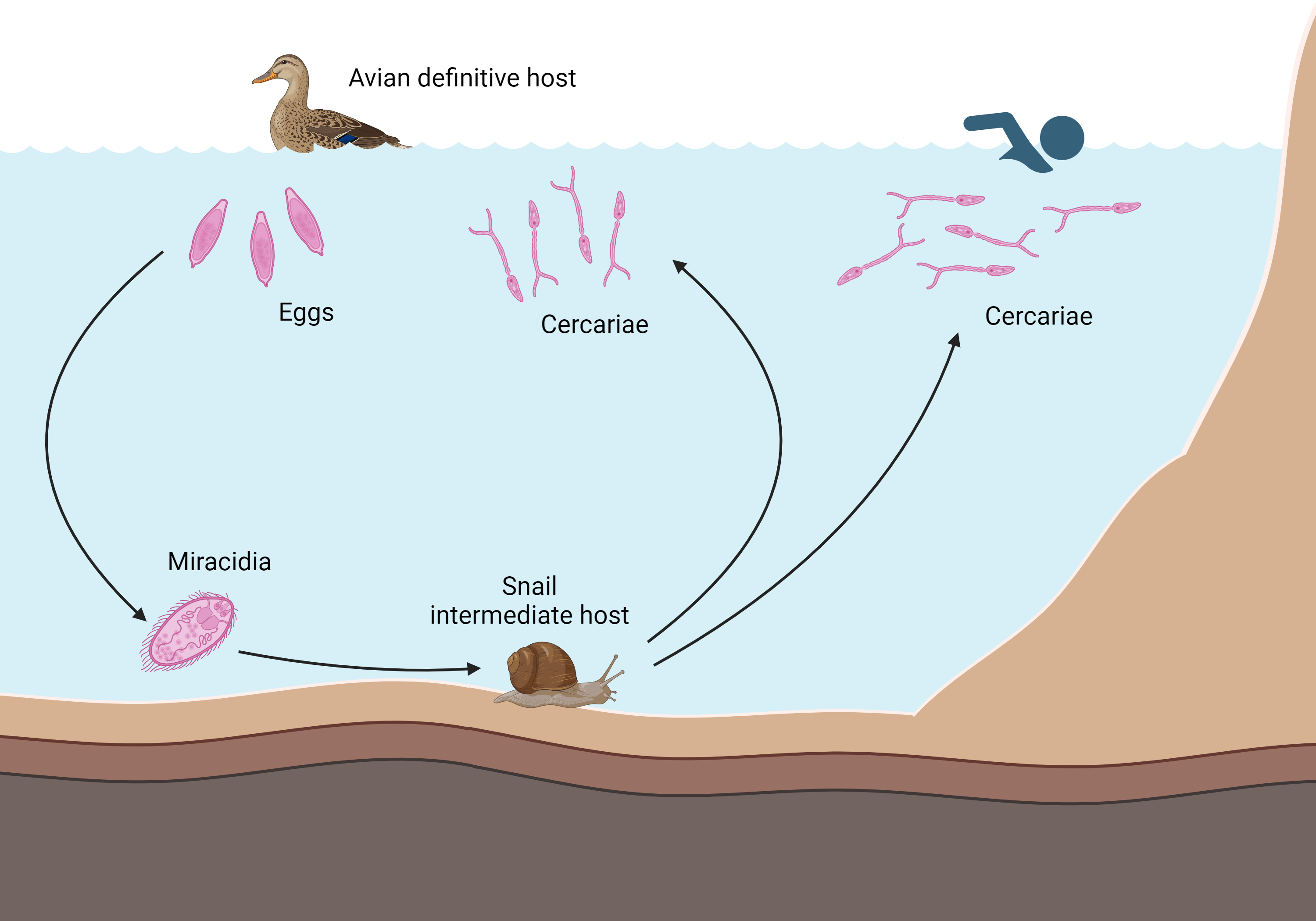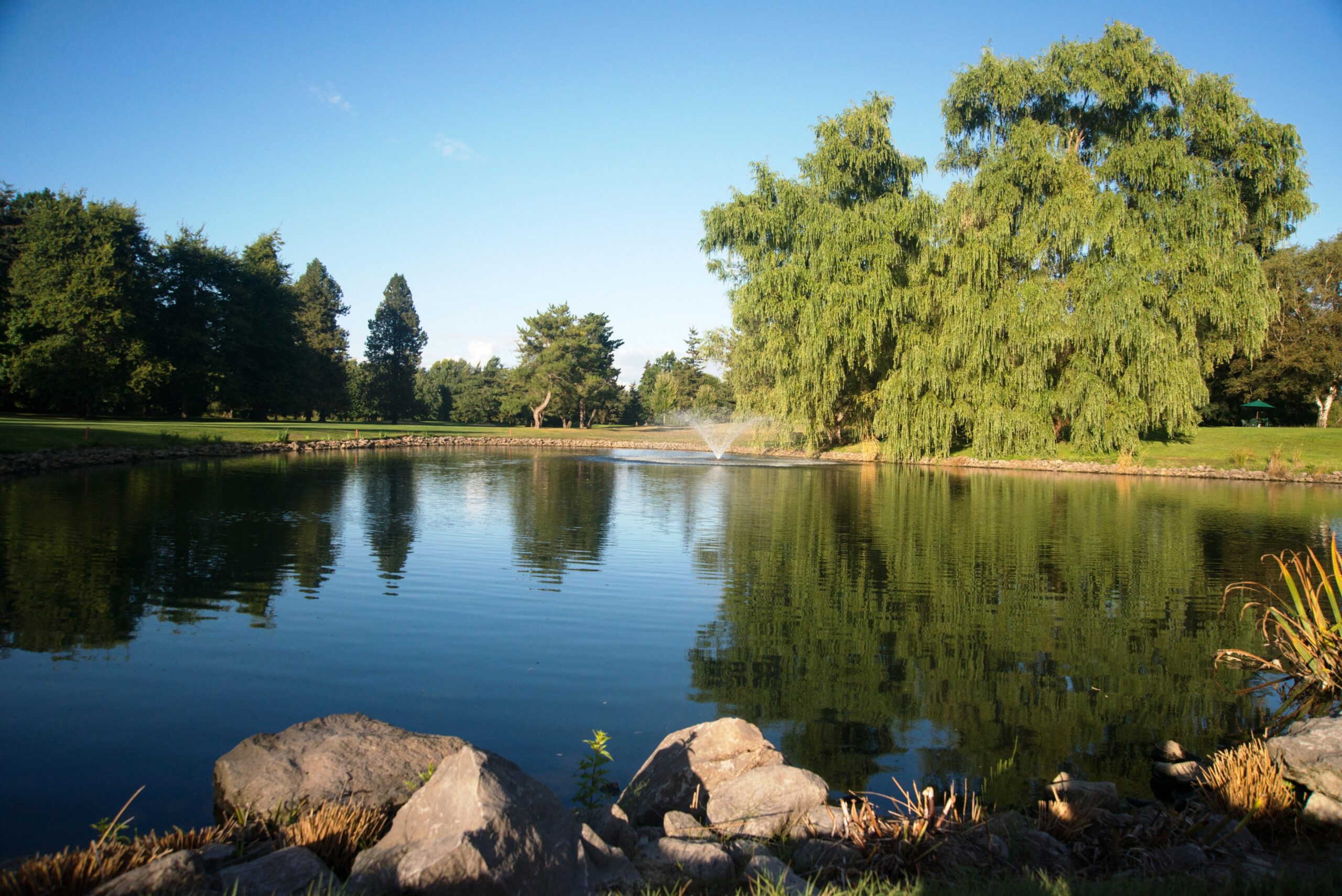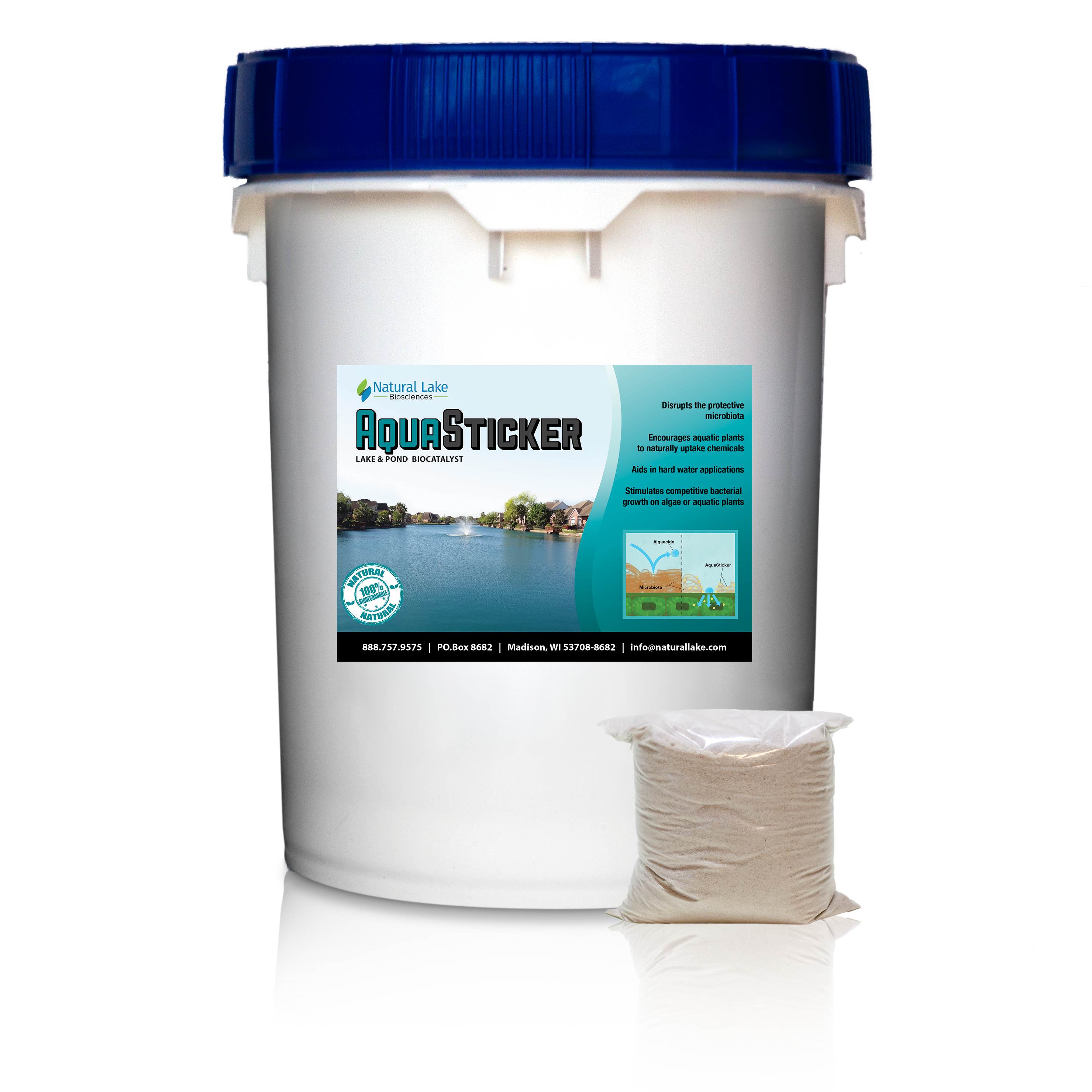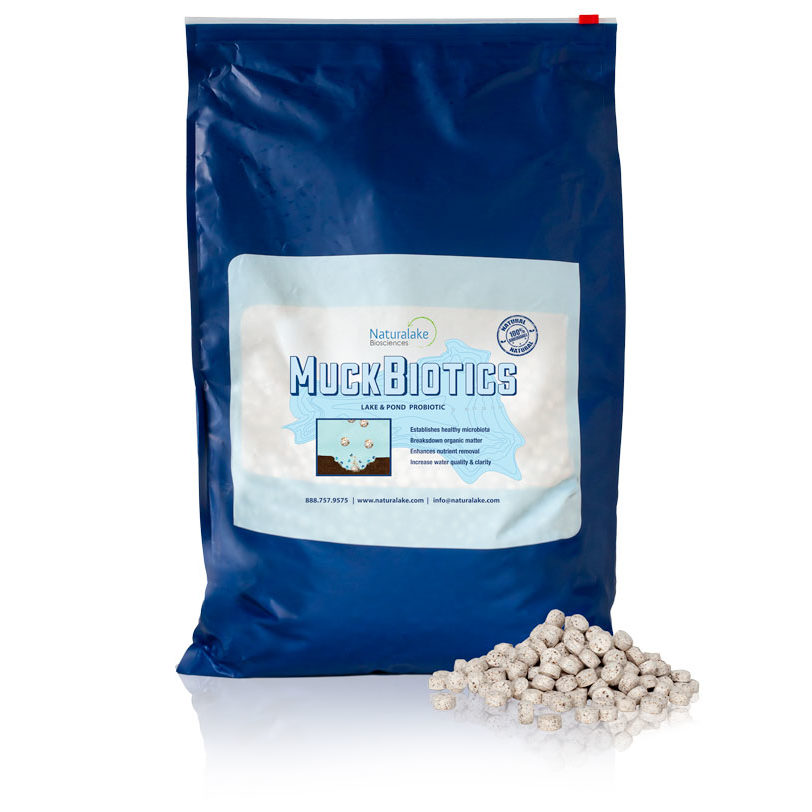Keeping Your Lakes Safe: All About Swimmer’s Itch
Biology, Detection, Risk Factors, and In-lake Management Options for Swimmer’s Itch
By


Figure 1. Picture of cercariaea (Public Health Image Library)
Biology
Swimmer’s itch (cercarial dermatitis) causes severe skin infections in humans who engage in recreational water activities. Swimmer’s itch occurs when the second larval stage of a flatworm (trematodes) penetrates human skin. How these larvae enter a water body is a multi-stage process where an adult flatworm reproduces in waterfowl, releasing eggs into the water. The eggs hatch and disperse the first larval stage, called miracidia. The miracidia then infect snails as an intermediate host in which asexual reproduction occurs, producing the second dispersive larval stage called cercariae. Cercariae (Figure 1) emerge from infected snails and infect appropriate final hosts (birds), thus completing the life cycle. The accidental penetration of cercariae into human skin causes swimmer’s itch, as shown in Figure 2.

Figure 2. Generalized life cycle of parasitic flatworm
causing swimmers to itch (modified from Loker et al. 2022). Created with Biorender.com
Detection
Testing and monitoring swimmer’s itch in a water body can help inform the public of potential risks and allow lake managers to evaluate various control techniques for efficacy. Traditionally, monitoring and detection have been done by collecting snails and isolating them in containers to see if they release cercariae in the water. This method is slow, labor-intensive, and lacks in-lake quantification for risk assessment. The best approach is to collect a water sample(s) and perform DNA extraction followed by various Polymerase Chain Reaction (PCR) techniques. These techniques can quantify a water sample for cercariae, eggs, miracidia, or schistosome DNA, collectively called environmental or eDNA (Rudko et al. 2018; Loker et al. 2022).

Major In-Lake Risk Factors
- Shallow vs. Open waters – Spending time in shallow parts of lakes is associated with high infection risks because snails accumulate more in shallow areas. Higher water temperatures in shallow areas will enhance larval production, and they are more prone to wind-blown accumulation of larvae. Larvae can also occur at greater depths, and the risk of swimmer’s itch can not be restricted to shallow areas, but the risk of infection is highest there.
- Aquatic Vegetation – Rich aquatic vegetation is often considered an indicator of potential high-risk sites because it provides ideal conditions for abundant snail communities. However, suitable snail hosts can also occur in areas free of vegetation.
- Eutrophication – Most cases of swimmer’s itch occur in eutrophic waters. Oligotrophic and mesotrophic lakes tend to have low snail species diversity and densities. Fewer snails mean fewer birds. Increases in nitrogen and phosphorus stimulate the growth of primary producers (plants and algae), providing ideal conditions for abundant snail populations (Soldánová et al., 2013).
In-Lake Management Options
There is no silver bullet for treating swimmer’s itch in a lake. However, some strategies can significantly reduce the risk. Molluscicides like copper sulfate can kill the intermediate host snail. In large lakes, this is achieved by routinely treating swimming areas and installing a Type II boom to prevent wind-blown larvae from entering. Maintaining a balanced lake ecosystem (plants and algae) with low nutrient levels can also significantly reduce the risk of swimmer’s itch. Incorporating biocatalysts such as Pondzilla Pro and AquaSticker with your algaecide and herbicide treatments will improve efficacy and degradation. Then, adding Temperature-driven Solutions post-treatment will counter many of the negative impacts of algaecides (bacterial sterilization) and prolong treatments 2-3 folds. Natural Lake Biosciences’ nutrient mitigation products, including MuckBiotics, MetaFloc, and Water Column Clarifier, allow lake managers to set specific nutrient criteria for phosphorus and nitrogen, which govern plant and algae growth. Contact a certified Natural Lake applicator for in-lake management options to control swimmer’s itch.
References
Jones, W. (n.d.). Schistosomal cercaria. Public Health Image Library. Retrieved September 13, 2024, from https://phil.cdc.gov/details.aspx?pid=8556.
Loker, E. S., R. J. DeJong, and S. V. Brant. 2022. Scratching the itch: updated perspectives on the schistosomes responsible for swimmer’s itch around the world. Pathogens 11: 587.
Rudko, S. P., R. L. Reimink, K. Froelich, M. A. Gordy, C. L. Blankespoor, and P. C. Hanington. 2018. Use of qPCR-based cercariometry to assess swimmer’s itch in recreational lakes. EcoHealth 15: 827–839.
Soldánová, M., C. Selbach, M. Kalbe, A. Kostadinova, and B. Sures. 2013. Swimmer’s itch: etiology, impact, and risk factors in Europe. Trends in parasitology 29: 65–74.
Tip of the day:
Cercariae larvae are 1/32 of an inch long or 0.79 mm, almost invisible to the naked eye.

About the Author
Patrick Goodwin, M.S., CLM, serves as a Water Resource Specialist at Natural Lake Biosciences, bringing over a decade of expertise in water resource management. He specializes in collecting data to assess nutrient loading and its impacts on algal blooms and water clarity. With a proven track record of restoring numerous water bodies, Patrick is recognized as an authority in implementing oxygenation and circulation techniques.
Stay Up to Date With The Latest News & Updates
Subscribe Below for Natural Lake Biosciences Updates and Event Invitations!




0 Comments